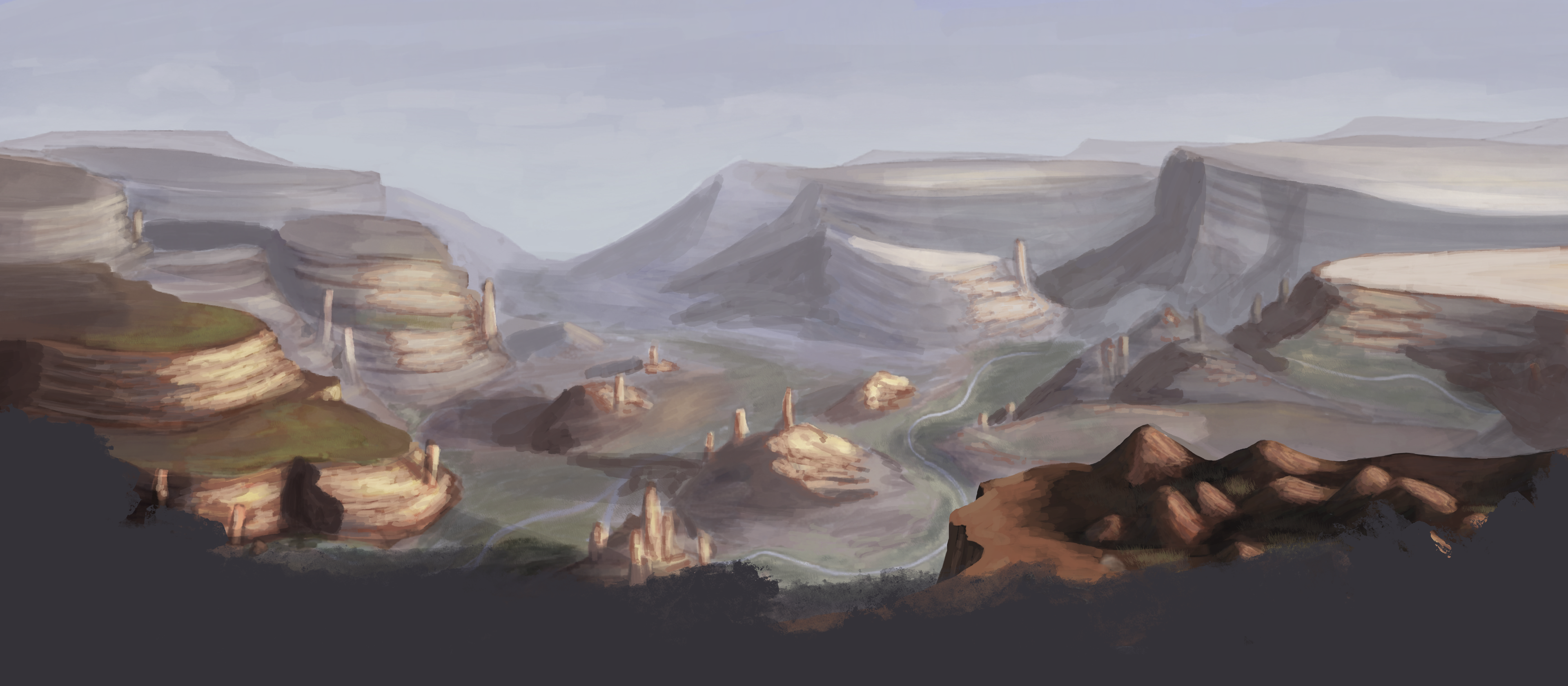Vulruja Crab
Vulruja, derived from the local words "Vulung Ruja" meaning "mud crab," is a unique species of crab found exclusively in the salty brine pools of Vulung Dugsa. This species evolved from a sea crab that sought refuge in the harsh and untamed environment of the brine pools.
Unlike traditional crabs with two pincers, the Vulruja crab possesses a single pincer. Females have the pincer on the left side, while males have it on the right, and in the rare case of an intersex crab appearing it has two pincers. The other claw takes the form of a lance-shaped spike. The presence of this lance claw is attributed to either a rapid evolutionary adaptation for self-defence or as a tool for constructing nests within the mud pits. Similar to a lizard's tail, the lance can be shed and regrown.
To create their nests, Vulruja crabs utilize the leaves and stems of Sansiprex plants. They pull these materials beneath the mud, constructing small barrows that provide shelter and protection from predators. These barrows allow the crabs to hide safely and remain out of reach, ensuring their survival in the challenging environment of the mud pits.
Basic Information
Dietary Needs and Habits
Its dietary needs primarily consist of insects, which are gathered by pulling the Sansiprex bulbs into the salted water until the insects within are drowned.
Occasionally while defending against its feathered predator it can take it down, the carcass is dragged into its borrow allowing the crab to feast upon it slowly safe in the confines of its nest.
Additional Information
Perception and Sensory Capabilities
The eyes are uniquely positioned, nestled deep within its face. This anatomical arrangement provides the crab with several advantages. By being set back and protected by the exoskeleton, the eyes are shielded from potential damage, ensuring their functionality even in the harshest environments.
Despite their concealed position, these eyes exhibit remarkable visual acuity. Adapted to the crab's habitat in the brine pools, they possess the ability to detect subtle movements and capture faint light. Their hidden placement allows the crab to remain inconspicuous while maintaining a keen sense of awareness.
Geographic Distribution
Remove these ads. Join the Worldbuilders Guild









Comments